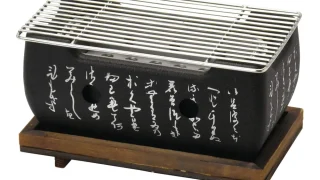Rush tatami to breathe!
Rush tatami is alive!
Rush tatami breathes and also regulates the humidity in the room.
Rush tatami mats may be one of the absolutely necessary items for Japanese housing.
Rush tatami has a very good quality, and the Rush tatami "breathes" to clean the air and regulate the humidity. As you know, Japan has a hot and humid climate with four seasons. Tatami has long been popular as a housing material and flooring material that is extremely suitable for this rich environment.
Rush tatami mats have the wonderful property of "breathing" and adjusting the humidity and temperature of the room, but it is said that one tatami mat absorbs as much as 500cc of water.
The absorbed moisture is released to moisturize the air in the room when the air is dry.
Tatami can be said to be a natural dehumidifier / humidifier. In addition, tatami mats are known to adsorb even harmful substances such as nitrogen dioxide in the air, which are harmful substances to the body. Because of this effect, tatami mats are said to have the ability to purify air.
"Rush", which is used as a material for Rush tatami mats, has a sponge-like structure, so unlike its thin appearance, it contains a lot of air.
Rush tatami is soft and absorbs shocks, so it is kind to the body and even absorbs sound.
Also, because the air has the property of not easily transmitting heat, the tatami mats that use this "rush" have the characteristic of blocking the hot air in summer and the cold air in winter.
It is because of the secret of Rush tatami that you can spend the four seasons of Japan comfortably, saying "summer is cool and winter is warm" despite the high temperature and humidity.
In this way, I think that Rush tatami mats, which have been cultivated based on the Japanese culture, have become an indispensable part of Japanese culture.
Western-style flooring is good, but I definitely want to feel the goodness of Rush tatami mats.
For the health of your family, we recommend that you take good care of your tatami mats and use them for a long time.
Author Profile
Latest entries
 matcha bowl / Yunomi tea cup2025年1月21日Kutani ware teacups are very easy to use
matcha bowl / Yunomi tea cup2025年1月21日Kutani ware teacups are very easy to use Japanese style BBQ stove grill2025年1月20日Combine a Japanese style BBQ stove grill and sake cups for a special dinner
Japanese style BBQ stove grill2025年1月20日Combine a Japanese style BBQ stove grill and sake cups for a special dinner SAKE bottle and SAKE cup2025年1月17日Mino Ware Gold-painted Sake Ware is Very Beautiful
SAKE bottle and SAKE cup2025年1月17日Mino Ware Gold-painted Sake Ware is Very Beautiful NEWS2025年1月17日Tatami rush grass nap Fluffy Foldable Sleeping Mattress is comfortable
NEWS2025年1月17日Tatami rush grass nap Fluffy Foldable Sleeping Mattress is comfortable

